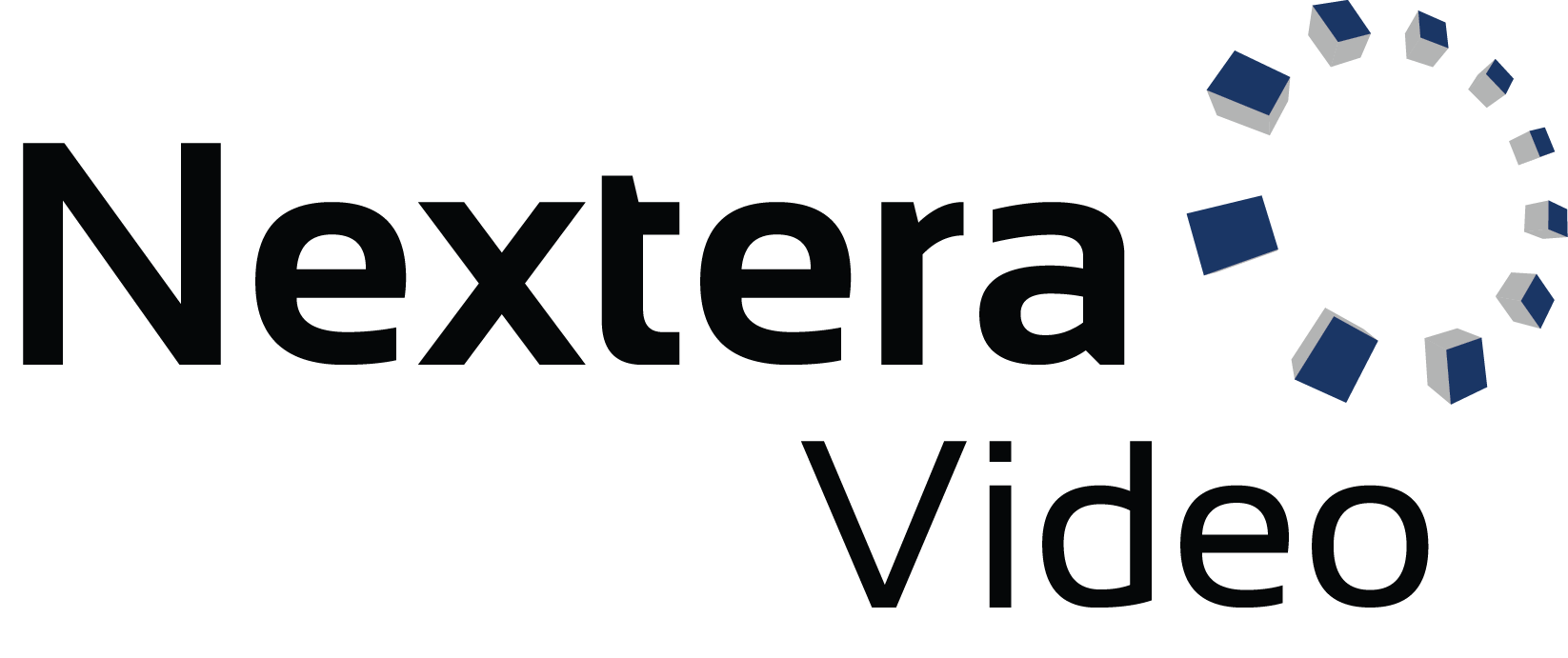Video over IP Glossary
AES67 – A layer 3 protocol developed by the Audio Engineering Society, this is the most common standard for audio over IP.
AIMS – The Alliance for IP Media Solutions (AIMS), is a non-profit trade alliance that promotes the open standards that broadcast and media companies use to move from legacy SDI systems to a virtualized, IP-based future. Led by Grass Valley and Imagine, this group is promoting the VSF TR03 and TR04 “protocols”. TR actually stands for Technical Recommendation, so these are not standards, but rather the input suggestions into the standards community. Learn More – AIMS Alliance
AMWA IS-04 – Advanced Media Workflow Association, Inc (AMWA) specification for registration and discovery, based on JT-NM RA1 discovery and registration framework.
AMWA IS-05 – Advanced Media Workflow Association, Inc (AMWA) specification for connection management.
AMWA IS-08 – Advanced Media Workflow Association, Inc (AMWA) specification for audio channel mapping.
AVB – Audio Video Bridging also known as IEEE 802.1BA, 802.1Qat, 802.1Qav and 802.1AS. This system supports timing, bandwidth reservation, and queuing, but requires special AVB-aware switches.
DANTE – (Digital Audio Network Through Ethernet) was developed by Australian company Audinate. It is being proposed as an Audio over IP Standard, but differs from AES67 and SMPTE ST302.
Datagram – A self-contained, independent entity of data carrying sufficient information to be routed from the source to the destination computer without reliance on earlier exchanges between this source and destination computer and the transporting network.
IETF – Internet Engineering Task Force develops and promotes voluntary Internet standards. Now that “professional” video and audio are transported over the same networks as internet traffic Ethernet or IP. They are contributing recommendations, standards and protocols. Their mechanism for technical suggestions comes under RFC- Request For Comments. Sometimes the IETF adopts some of the RFC’s as Internet Standards.
JT-NM (Joint Task Force on Networked Media) – This was created by the EBU, SMPTE and VSF to support the transition to IP.
JPEG 2K – A standard for compressing sequences of JPEG 2000 images for motion.
JSON-RPC – A remote procedure call protocol, which allows for notifications and for multiple calls to be sent to the server which may be answered out of order.
LLVC (Low Latency Video Converter) – Developed by Sony, this technology is to support the video compression required for 4K 60p transmission over 10 Gbps Ethernet.
NDI (Network Device Interface) – This system was developed by NewTek to provide a low bandwidth alternative. NDI uses a temporal codec, rather than a spatial (I-Frame only) codec like the others, to improve channel density. Learn More – NewTek NDI
NMI (Networked Media Interface) – This system was developed by Sony as part of their IP-Live system, which includes the Low Latency Video Codec (LLVC), NMI packetizer with Frame-aligned FEC, and Network Device Control Protocol (NDCP) for registration, discovery, and frame accurate switching through COTS switches. All three have been submitted to SMPTE and released as SMPTE RDD 34, RDD40, and RDD38, along with the Sony developed SMPTE 2059 Precision Time Protocol (PTP) system. Supports up to 6:1 compression visually lossless. Learn More – Sony NMI
NMOS (Networked Media Open Specification) – The use of logical data model to add identity, relationships and time-based information to content and broadcast equipment.
PCR (Program Clock Reference) – Overall clock reference which is transmitted in the transport stream for synchronization of the PTS.
PTS (Precision Timestamp) – Timestamped metadata in an MPEG TS for use in synchronization in audio and video streams.
RDD (Registered Disclosure Documents) – Documents within the scope of interest of the SMPTE, submitted by any entity that wishes to make a disclosure available to the public and to use the Society’s publication and distribution mechanisms for this purpose. These may be published document of general interest to the industry that are not Engineering Documents.
RFC 3190 – Published by the IETF, this is the packetization scheme for encapsulating nonlinear and linear audio data streams using the Real-time Transport Protocol (RTP)
RFC 3550 – This is the IETF protocol for real time transport (RTP) in end to end transport functions for live video, audio, and metadata over a network.
RFC 4175 – This is the IETF protocol to encapsulate SDI to an IP Stream for transport. RFC4175 is only the encapsulating technology not the transport protocol. VSF TR-03 suggests the use of RFC4175 for transporting video payloads.
RFC 4566 – Published by the IETF, the Session Description Protocol (SDP) is a format for describing streaming media initialization parameters.
RTSP – Real Time Streaming Protocol falls under Internet Streaming and being adopted for real time streaming over networks.
SMPTE 2059 – These are the network timing and synchronizing standards enabling “Network Genlock”. Based on the IEEE 1588 Precision Time Protocol (PTP) standard.
SMPTE 2110 – This is the SMPTE designation for the industry standards and specifications to transport audio and Video over IP networks with full interoperability.
- 2110-10: Timing and definitions
- 2110-20: Uncompressed active video
- 2110-30: Uncompressed PCM audio
- 2110-40: Ancillary data
- 2110-50: Embedded essence
SMPTE ST 2038 – Transport of ancillary data packets in an MPEG-2 Transport Stream.
SMPTE ST 302 – This audio standard specifies how to transport AES3 audio in an MPEG-2 Transport Stream.
SVIP – Studio Video over IP
VC2 – Visually lossless compression/decompression developed by Barco Silex defined under SMPTE2042
VSF (Video Services Forum) – VSF is not a standards body, but rather develops technical recommendations as a basis for future standards. The group created two technical references TR03 & TR04, which are the starting point for SMPTE 2110 development. Learn More – Video Services Forum

